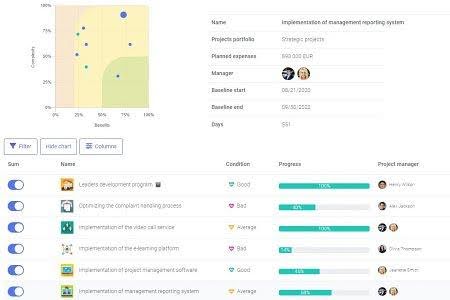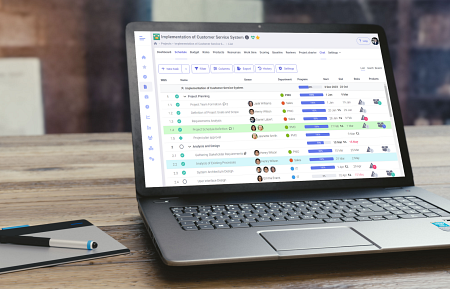
An action strategy is essential if you want to run corporate projects effectively. When you don't plan activities for the whole team, you won't be able to meet the set deadlines for completion or, worse, you'll exceed the pre-imposed budgets to meet the targets. So how do you manage project portfolios so everything goes according to plan? Use advanced business software!
Where do you start planning the implementation of corporate projects? It's not that difficult!
In practice, everything becomes easier when you implement advanced software tailored to your company's individual needs. Using a project management programme, you can freely plan activities, assign employees to specific actions, create reports and build project portfolios from scratch.
To begin with...
Identify the purpose of the project – you need to know exactly what you want to achieve. Is the project to increase sales? Improve customer service? Or implement a new tool? A clear objective is the foundation without which it is difficult to plan the next steps.
Assemble a team and roles – you can't do everything alone. Think about who you need to get the job done. Assign responsibilities. This will avoid misunderstandings and delays. Everyone will know what they are responsible for.
List the main milestones and deadlines – the plan needs to have a framework. Divide the project into concrete steps. Determine what needs to be done, when and in what order. Don't overdo the details - the main points are enough. You'll refine them later.
Identify risks – it's better to be prepared. Think about what can go wrong. Are you in danger of being delayed? Or a lack of resources? The earlier you anticipate this, the easier it will be for you to react when something happens.
Once you have the basics in place, you can move on to the more complex activities and final implementation of approved projects. The more precisely you plan everything (using, for example, a Gannt chart), the greater the chance that you will be able to optimise costs and speed up the execution time of specific activities in the company.
What exactly are project portfolios and why is it so important?
A project portfolio is a collection of company projects, which includes the most effective methods for completing them and tips for optimising the work of all those responsible for their implementation.
In short, it is one of the tools that allows you to manage your company's projects - both your own in relation to business development and activities for clients. Managing a portfolio of projects is a complex process that requires effective coordination, prioritisation, appropriate deployment of resources and constant monitoring of the consistency of activities - so that all projects collectively support the objectives intended for the portfolio.
It also happens that some projects in a company share common goals, in which case it makes sense to group them together. This is what project portfolios are for, where you ‘throw in’ all the relevant activities, as well as the teams responsible for their implementation.
This is one of the key elements in strategic business project management!
Why use the project portfolio management option in enterprise software?
There are a myriad of reasons, but the most significant is that building project portfolios allows you to quickly identify risks in multiple areas covering specific projects. This will help you spot global issues, make it easier to manage budgets, and use only as many resources as are actually needed for a particular project.
Remember that, in addition to the software, your knowledge of project portfolio management will come in handy. In this case, the key activities are the selection of projects for the portfolio, the definition of relevant objectives to be achieved and the reporting of activities that have brought the company closer to achieving the project objectives.







